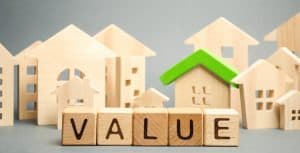Easiest to explain through the work of Survey Spain
Our niche is that we are principally involved with Residential Valuation, with a smaller percentage of Commercial and Hospitality, Land and Businesses.
Our work ranges from assisting with valuing 10,000+ property portfolios for fund investors, to recently advising a client to ˜avoid’ the purchase of a ˜dream’ 26,000‚ doer upper’ townhouse, suffering from extreme damp up to first floor level. Perhaps a hint of the problem was in the street name, Calle Arroyo.
No matter the property, it all comes down to the same basics, whether valuing for rental and capital appreciation for investment, or for ownership and occupation.
Where is the property
Is it’s address popular? Why, and does this property have the location benefits?
Where is the property within that View, Orientation Street, frontage Beach or Golf, etc
What type of property Palace or country house, villa or townhouse, penthouse or apartment?
What is its size, both in sq m and in accommodation? We’ve valued villas from 3,000 sq m building, to studio apartments of less than 30 sq m. Within limits, a house with more rooms will be worth more than one of the same size with fewer. Terraces tend to be essential now.
What is its style and presentation – a modern concrete frame with demotics and huge windows all round, OR traditional rubble filled walls with small windows and pitched roof?
Then we go onto the paperwork!
Paperwork
Fortunately, in Spain we have Title Extracts (Nota Simple) and Tax descriptions (Catastral) plus Google aerial photos and Street View.These can give the valuer a good idea of a property before leaving the office
Unfortunately, we don’t have the ˜Holy Grail’ of valuers, which is accurate actual sale prices. Some information is obtainable from the Registrars, but can you trust the price recorded in the Title Deed (Escritura)?
Sources, such as clients declaring what they’ve paid, and friendly lawyers and estate agents willing to confidentially disclose the transaction, are the market crumbs the valuer works on.
These are then used to modify the analysis of asking prices, which are abundantly available. Sometimes too abundant, with the same property being quoted at many different prices. Only the agents will be able to tell us why!
The Valuation
Now comes the real measure of the valuer, in applying their experience and expertise to choosing the appropriate comparable properties, and then applying that information to the property being valued.
It takes time and judgement. Valuation is a combination of both art and science. As the art element of  valuation involves various factors such as sales forecasts, economic outlook and capitalisation rate/discount rate determination; whereas ‘science’ involves valuation approaches and statistical analysis. Valuation has lot to do with the mindset or the need of the person selling, and even more so, buying.
valuation involves various factors such as sales forecasts, economic outlook and capitalisation rate/discount rate determination; whereas ‘science’ involves valuation approaches and statistical analysis. Valuation has lot to do with the mindset or the need of the person selling, and even more so, buying.
The valuer has to remove personal emotion from their judgement and put themselves into the position of the prudent person, as described in the RICS definition –
The estimated amount for which an asset or liability should exchange on the valuation date between a willing buyer and a willing seller in an arm’s length transaction after proper marketing and where the parties had each acted knowledgeably, prudently and without compulsion.
Differences between RICS and Tasador Valuations
RICS are current market valuations, at the price the valuer judges the prudent buyer and seller would agree.
RICS Registered Valuers are educated by RICS with compulsory and guided advice on methods, but the final value is left to the valuer’s judgement.
The Tasador Valuation, in the search for consistency, has to comply with all the fine points demanded by the regulations of the Bank of Spain and Spanish Law. These can often show different values for different purposes, with the deductions being made affecting the final value.
Always ask your valuer what are their detailed instructions, and try to get an understanding of whether they’ve deducted things like the estate agent’s fee, before declaring their final value.
‘Hope Value’ is another exclusion sometimes, where a valuer can see and judge that some external event is increasing the value of a property or a whole area, but it’s not yet apparent in comparables. The RICS valuer declares that it’s been allowed for in the valuation. However, typically, that has to be excluded from Tasador valuations, perhaps removing them further from the value that a buyer and seller would apply.
Development Appraisals
These combine the knowledge of the ‘art and science’ valuer, with the experience of the building cost analyst, and the soothsayer skills of estimating future events and markets.
In very simplistic terms, the Costs of building the development over the next two or more years are deducted from the estimated Market Value of what’s to be sold when the property is completed, with the remainder being what’s available for purchasing the land and the profit on the development.
Various assumed interest rates and rates of return are applied to all these figures, including bank rates and inflation, to come up with a level of anticipated profit that will make the promoter and the financiers willing to take the risks. 1000’s of things can change throughout the period from instruction of the architect for the initial development proposal to be put to the planners, to the end sale of the last unit.
It’s a gamble, but skill and experience can reduce the risk parameters to an acceptable level, and profits can rise as well as fall, so that the demand of buyers can be met.
This has been a very brief and general run through of the business life of a valuer, but, despite its many frustrations, I can’t think of a better place to carry it out.





